
Teaching science can be tricky… I mean it’s such an abstract concept for our kiddos. It also doesn’t help, if our textbooks are not exactly kid-friendly… and let’s not even mention science labs. Who has time for them, right So how do we start the year off right? How do we hook our kids into loving science? And how do we manage labs so we can actually conduct experiments without going crazy?
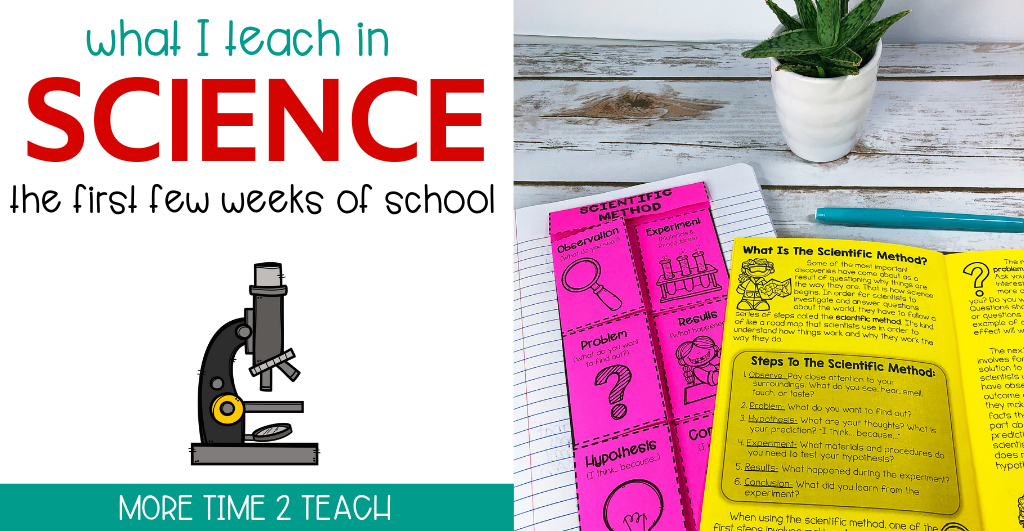
Instead of diving right into a new unit when kids return from summer break, I think it’s important to take time to cover a few basics. This will establish a strong foundation from the get-go + set the stage for more effective science instruction.
Students need to…
- understand why science is important!
- see themselves as scientists
- recognize the scientific method and be able to carry out each step properly. (We need to explain this concept in a way that our kiddos will understand… scientific method for kids!)
- identify a few common tools scientists use and be able to use them correctly.
- follow a few simple safety rules
Ok, so now that we understand WHAT our students need to know, let’s dive a little deeper into each of those concepts + how we can go about teaching them
What Does A Scientist Look Like?
We are all scientists! We wonder, we explore, + we even conduct our own experiments. We just don’t call them that But our kids don’t see themselves as scientists. As a matter of fact, many of them have a stereotype of what a scientist looks like.
Activity:
I begin every year by having a discussion with my kiddos. I ask them a simple question, “What does a scientist look like?” These are some of the responses I get year after year…
Okayyyyyyyyyyy!!! As you can see, they definitely do NOT see themselves as scientists… So our first step is to work on that by reading an adorable book called Ada Twist, Scientist by Andrea Beaty. This story does a great job of breaking down those preconceived notions and showing them how THEY can be scientists.
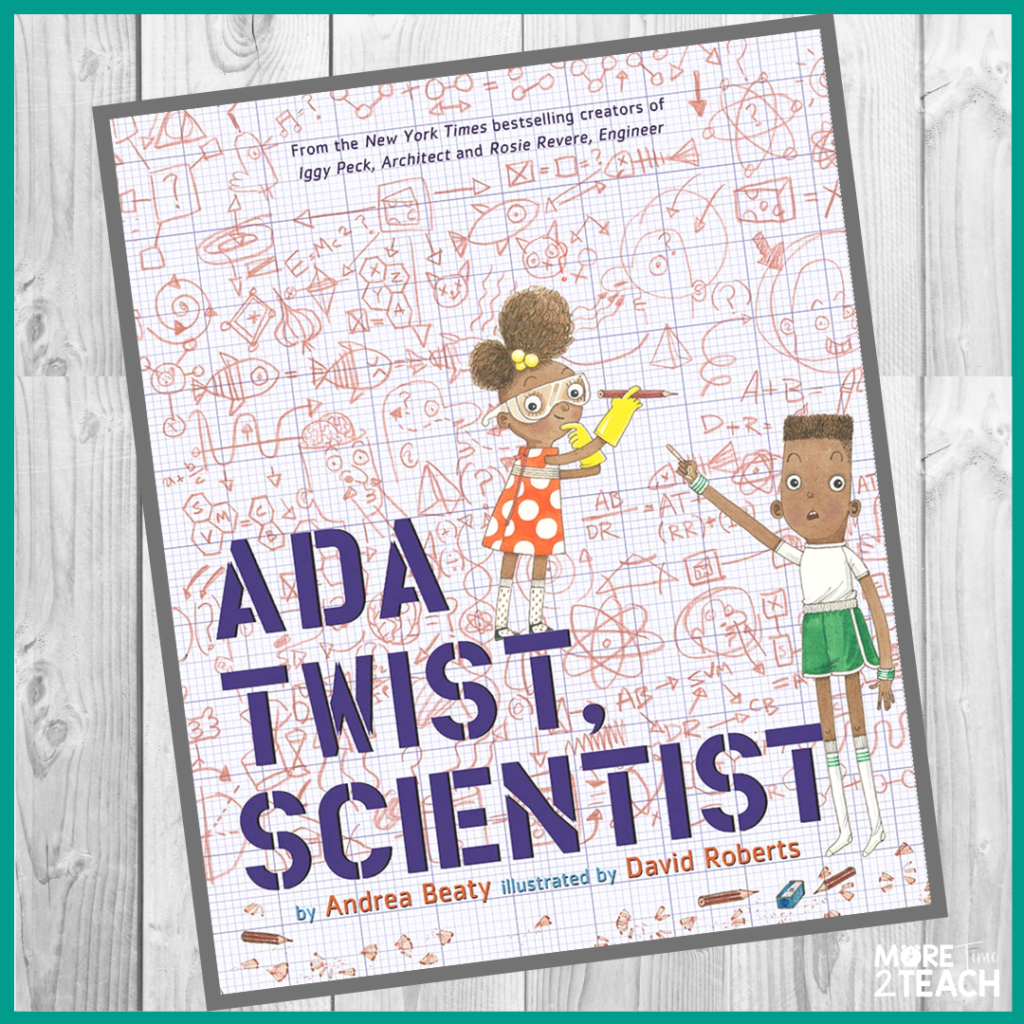
The story inspired by real-life scientists, Ada Lovelace + Marie Curie, tells the tale of a young girl named Ada and her quest for answers. She is endlessly curious… always asking why and carrying out elaborate experiments that don’t always go as planned. This clever book shows a young second grader carrying out the steps of the scientific method and BEING A SCIENTIST!!! Imagine that, a 2nd grader as a scientist #shocker
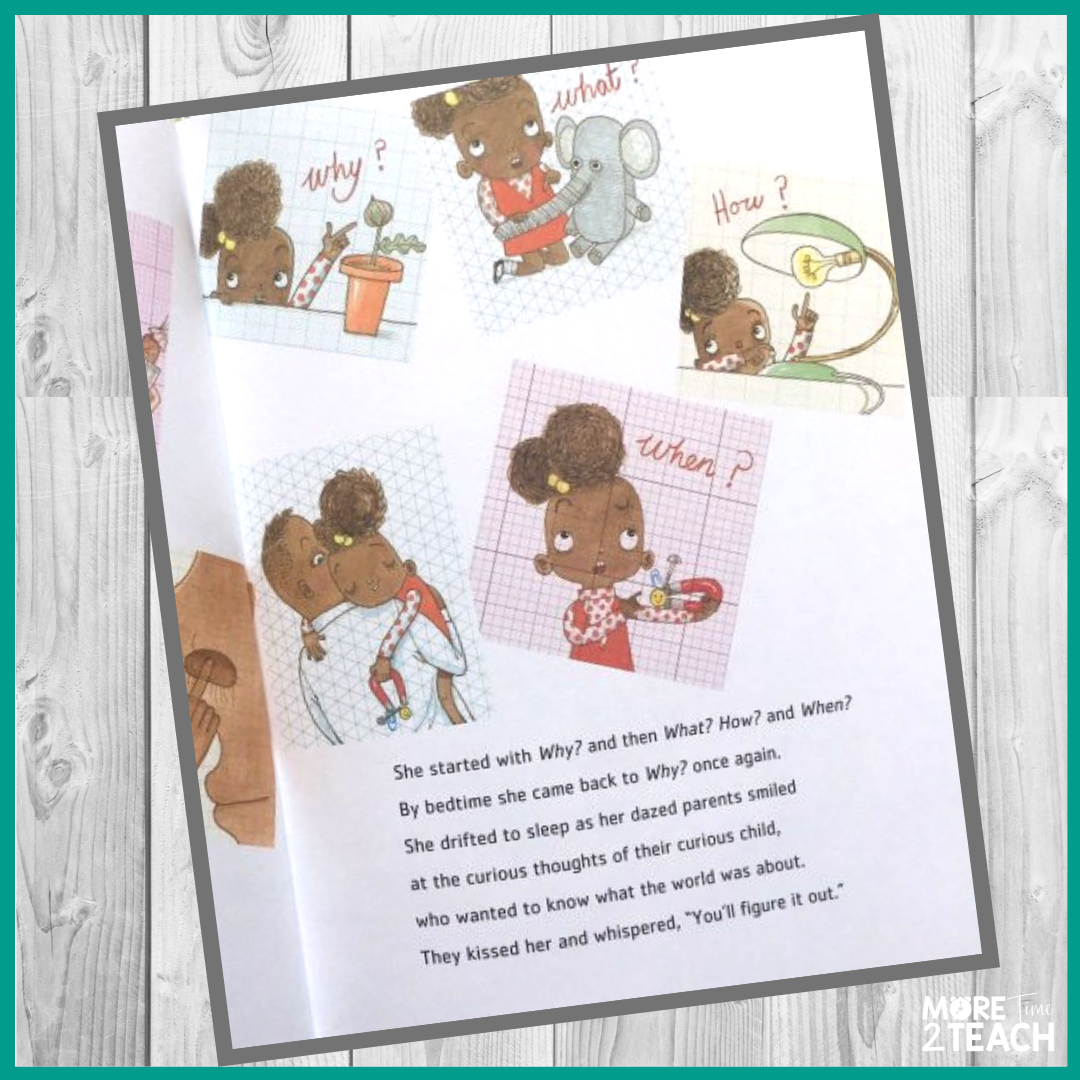
Now that we’ve established that scientists don’t have to be adults, don’t have to have crazy hair, and don’t have to wear glasses, we complete the following writing activity…
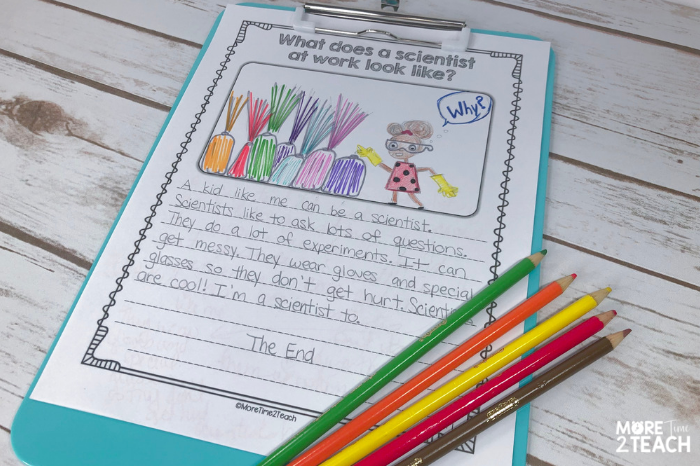
Don’t worry if your kiddos draw a scene from the story. The point is for them to start seeing themselves as scientists.
I love how everything changes once we’ve read the story + had a few more discussions. It’s amazing how one really great story can have so much impact!
Sign up for our newsletter to receive an extensive list of book recommendations by science topics!
Why Is Science Important?
Next up, understanding why science is important… Why do we need scientists and why do we have to learn about science anyway? Great questions… and those are the exact questions I get from many of my kiddos at the beginning of the year.
Activity:
Read a short informational passage that explains that:
- Science is EVERYWHERE and that we use it EVERY DAY- when we use our iPads, talk to Alexa, recycle, cook, and use our fancy Apple watches
- Science gives us the knowledge to understand the world better- because of science we can predict hurricanes + tornadoes
- Because of science, we’re able to determine if something is true or false- how else would we figure out that the world was round?
- Science helps us improve and create new technology- I still remember the first computers… they were big + clunky, and you could not take them with you. Could you imagine if scientists stopped exploring the world of computers once the first computers were created
- Science helps us find cures and treatments for illnesses- thanks to science we are able to live longer + healthier lives.
So how can we NOT learn about science? Choosing to ignore it just means we’re hurting ourselves.
After reading + discussing this kid-friendly passage, we record notes in our interactive notebooks. This helps organize and solidify students’ thoughts.
What Is The Scientific Method?
The scientific method is a series of steps used by scientists to understand the world around them. Memorizing the 6 steps is the easy part, but applying them can get a little tricky… especially when it comes to writing a hypothesis or conclusion. That’s why I like to spend a little more time in this area to make sure my kiddos really grasp it. This will also help labs run smoother and more efficiently!
Activity:
Begin by reading Cece Loves Science by Kimberly Derting. In this story, a young girl named Cece + her best friend Isaac conduct experiments to see if their dog will eat vegetables.
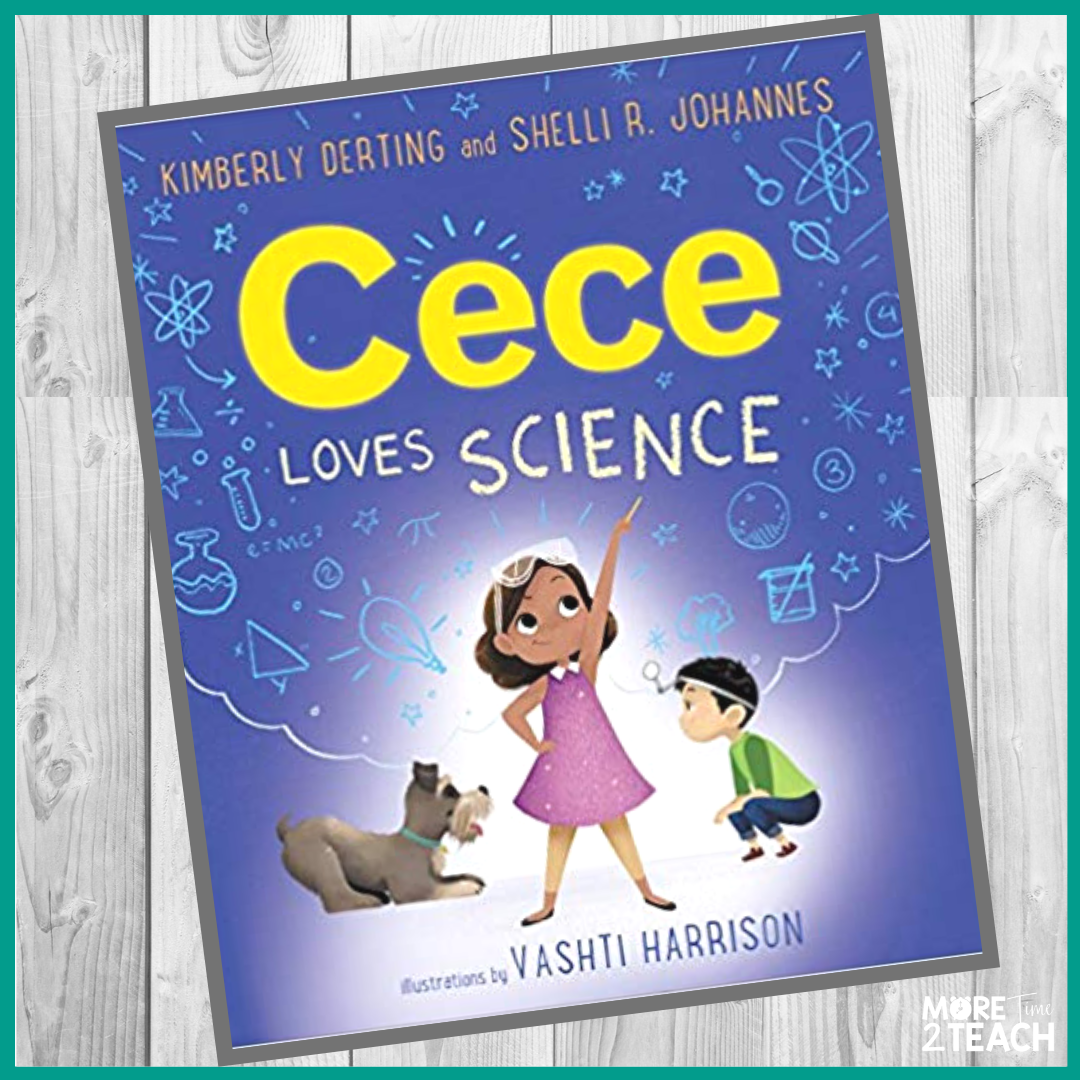
I love that this book introduces kids to the scientific method. It also shows scientists testing different solutions which teach kids that science is about trial and error. It’s also about thinking outside the box.
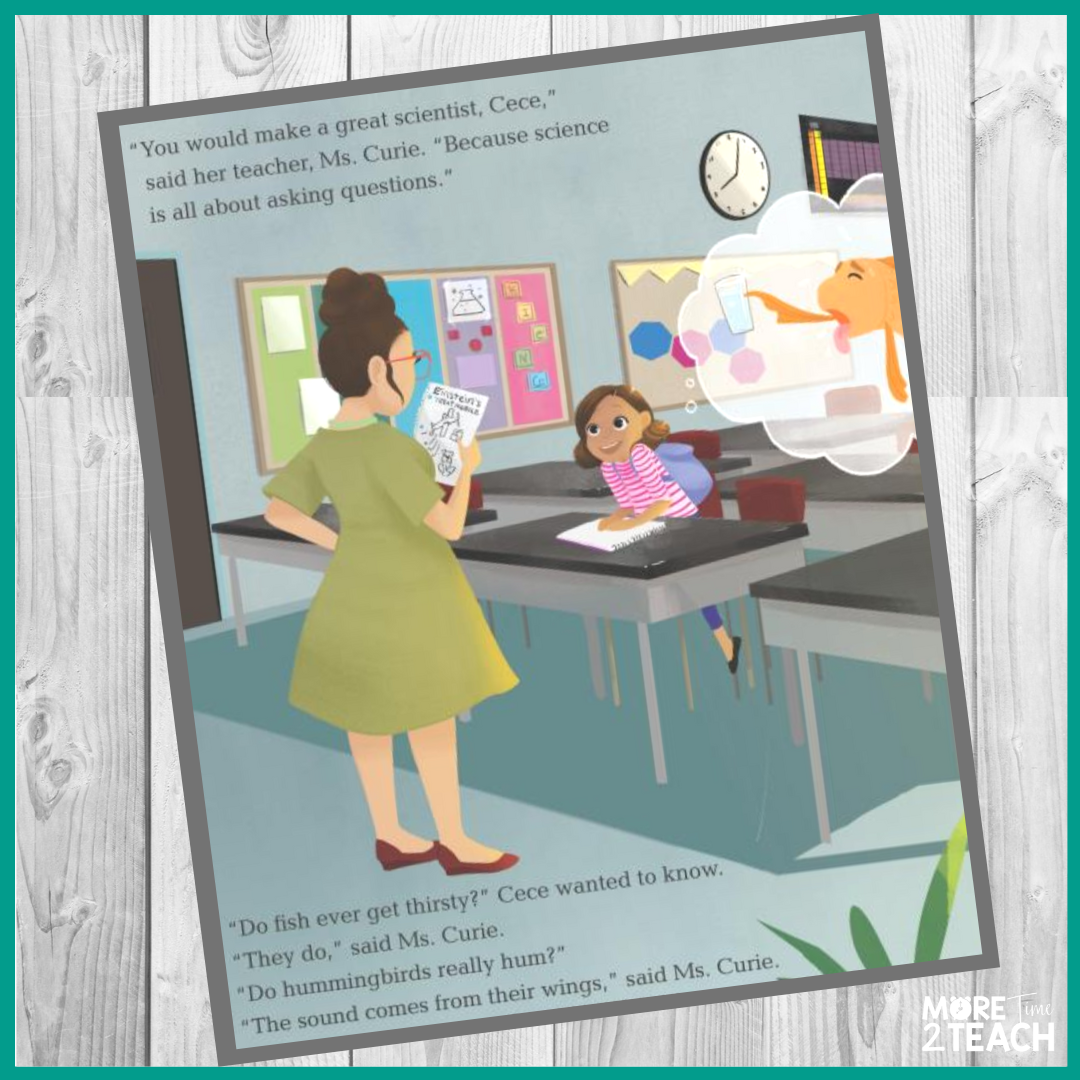
After reading the story + following up with a discussion, we read a page from our Practicing Science Booklet + begin digging deeper into the 6 steps of the scientific method:
- observation
- question or problem
- hypothesis
- experiment
- results
- conclusions
Students record definitions or descriptions for each of the steps in their own words. I like to compare a hypothesis to a prediction, which most students are already familiar with. We also discuss that like a prediction, there’s no right or wrong answer… So they should never go back to change their hypothesis at the end of an experiment.
Throughout this process, it’s good to discuss the importance of keeping accurate records. It’s also important to spend time talking about conclusions + how scientists form them.
Before concluding the unit, set aside time to conduct a complete lab from start to finish. Even if this means the lab takes 2 days. Doing so gives students time to practice the scientific method.
What Tools Do Scientists Use?
If our students are going to be scientists conducting experiments, they need to learn the names of the tools they’re going to be using. They also need to learn how to read and use them properly. Rather than waiting until the day you’re conducting a lab to teach students how to use a graduated cylinder, teach them from the start. Not only is it an activity that kids enjoy, but doing this at the beginning of the year, saves you precious lab time!
Activity:
I like to focus on the 10 most commonly used tools that kiddos will use throughout the year. (Remember, I teach 3rd grade!)
- safety goggles
- hand lens/ magnifying glass
- ruler
- microscope
- thermometer
- balance scale
- stopwatch
- beaker
- graduated cylinder
- spring scale
As we read about the different tools in our booklets, we’ll take time to see, touch, and explore each tool. I know it might be a little time consuming, but once again we’ll reap the benefits later on. Another plus is that the kids get really excited about science #WINWIN
What Safety Rules Should We Follow?
Safety first I tell my kids ALL.THE.TIME… That’ why I review 8 safety rules. Not only do we discuss the rules, but I make a point of asking the kids to explain why each rule is important. Why is it important to listen to the teacher during labs? Why should you read through the lab sheet BEFORE beginning the actual experiment?
Activity:
Play a game of charades. One student picks a rule to act out and the rest of the class tries to guess which one it is. You can also have them role-play each of the rules.
If you’re interested in any of the activities about or additional resources to help you introduce science in the first weeks of school, check out the complete introduction to science unit.
The unit includes a checklist of all NGSSS to keep track of standards covered, 15 days of lesson plans, 11 page kid-friendly informational passages, Quick Checks to assess each topic as you go, Writing Prompts, Interactive Notebook flaps, vocabulary cards with real-life pictures, 3 labs with recording sheets, pictures, and directions, unit assessment, and activity sheets for students to practice using each of the 10 tools, and more…
Feel free to use the image below to save this post to your Pinterest board:
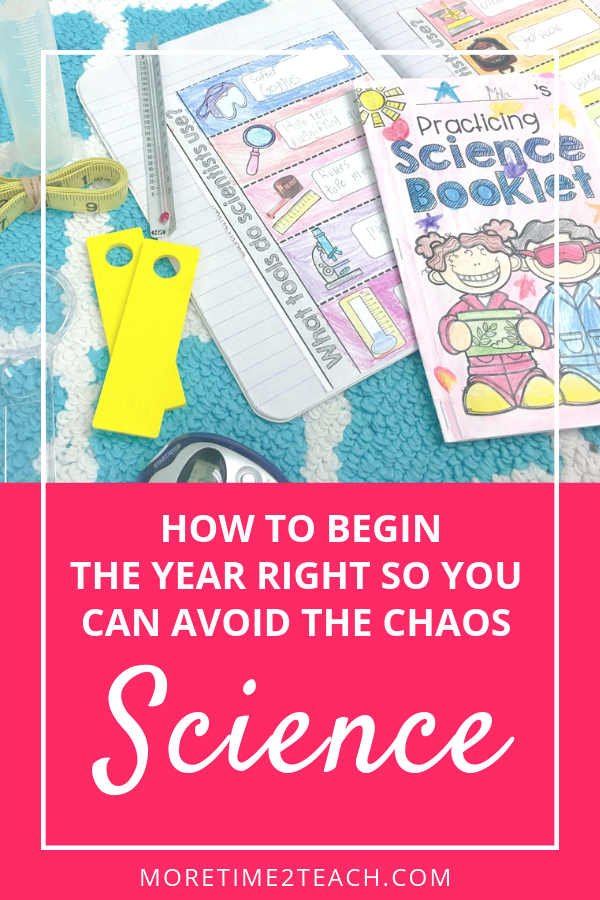
You can also visit these science-related posts to help you plan future lessons:

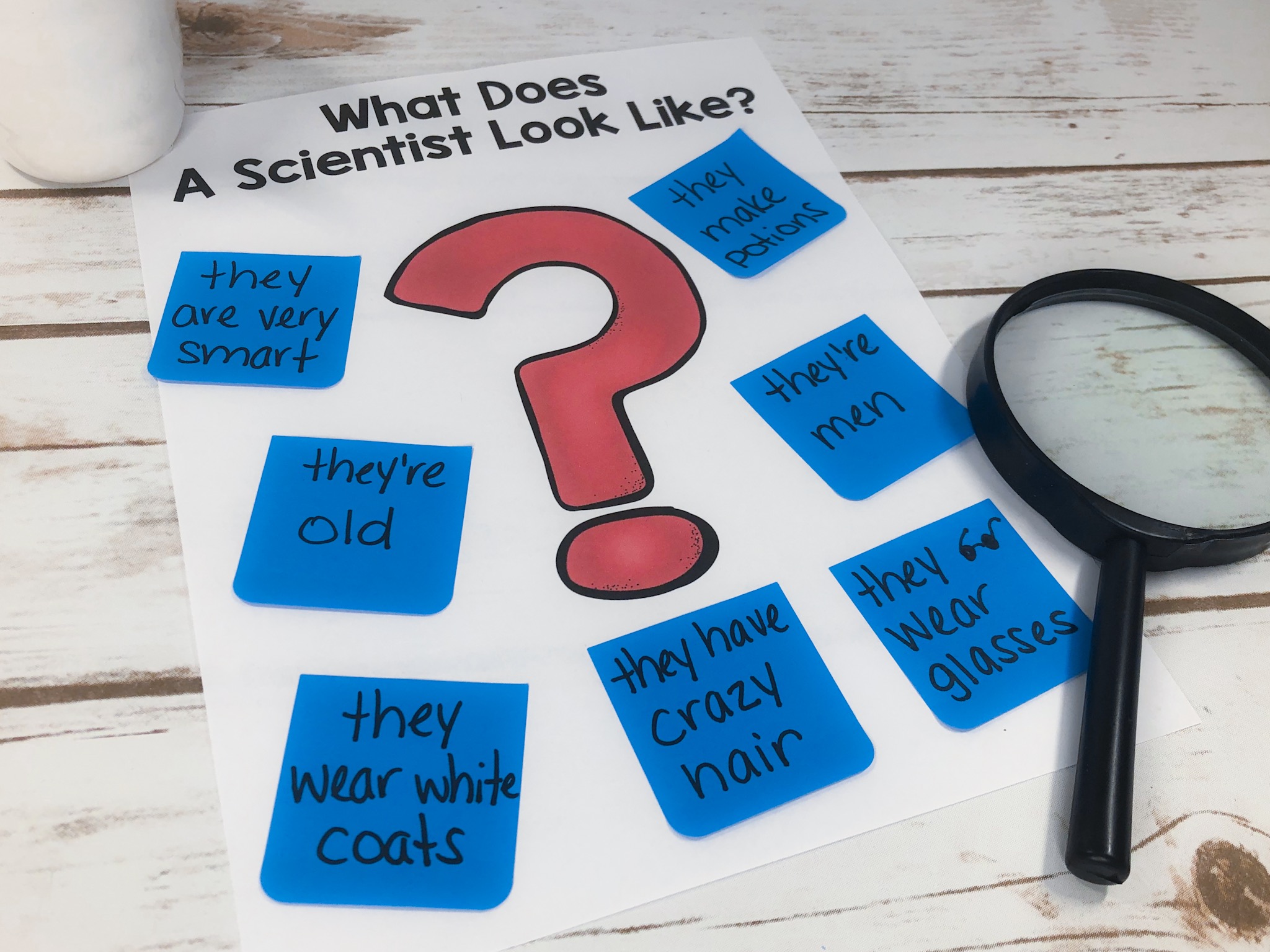
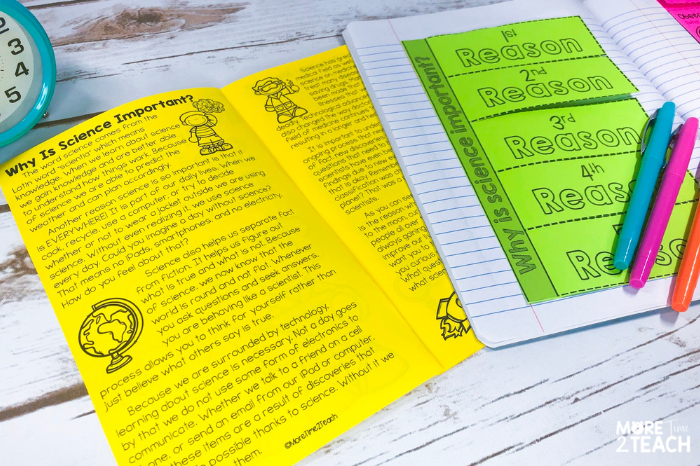
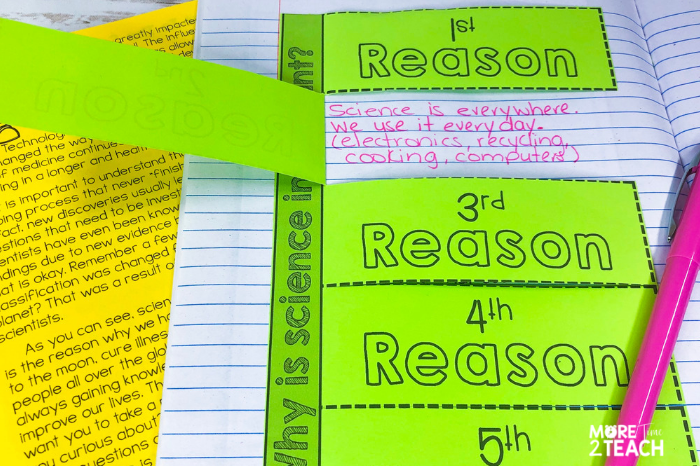
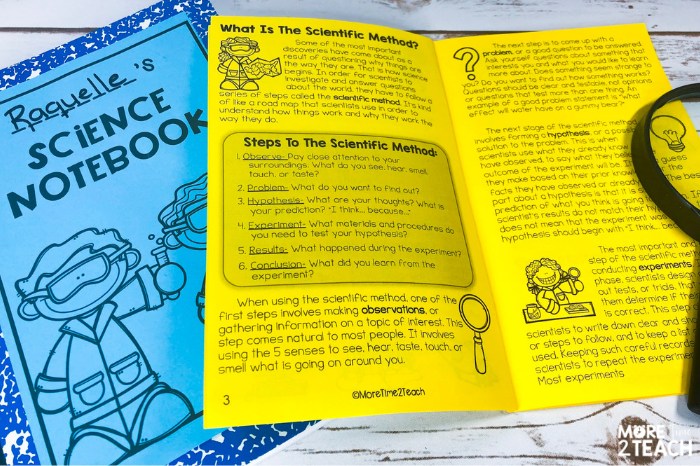
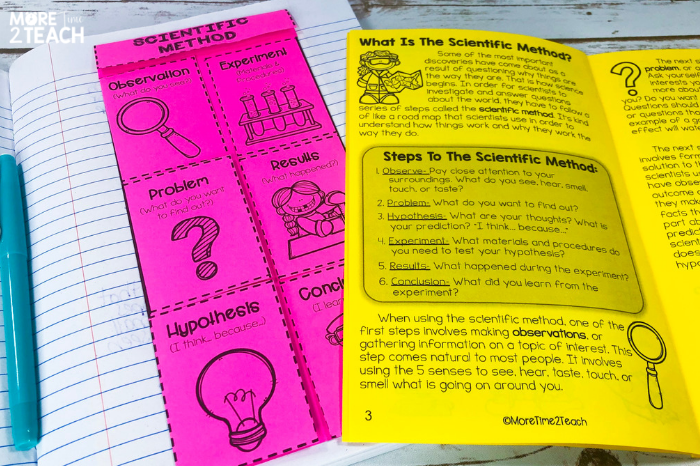
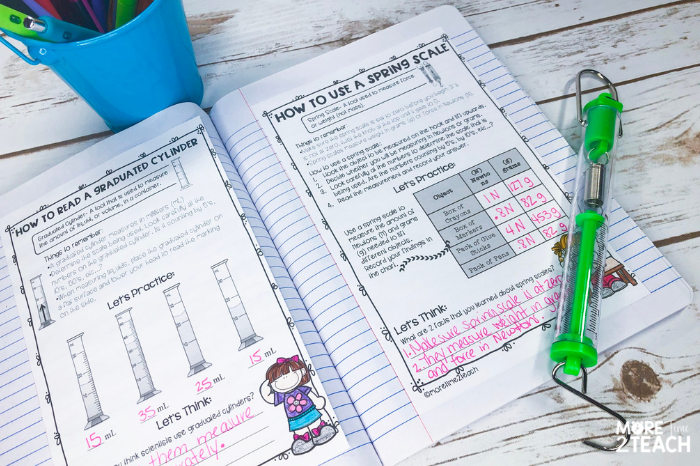
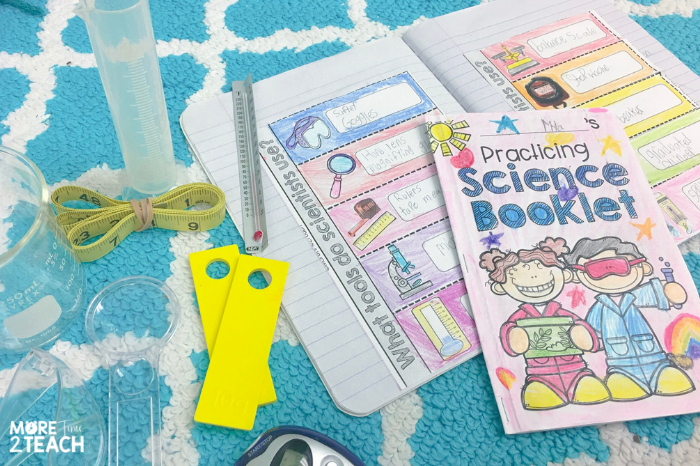
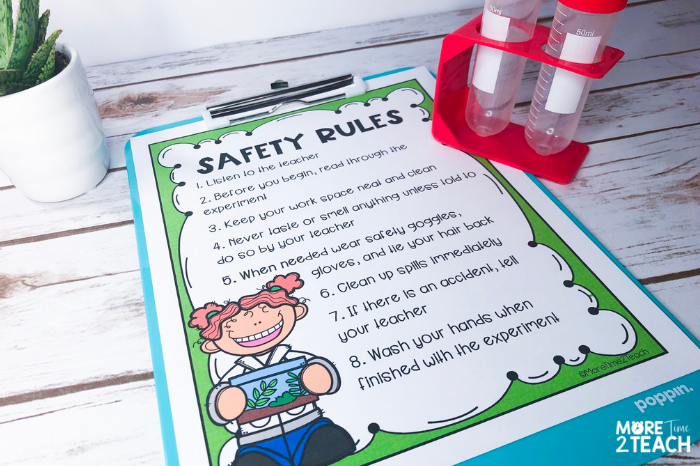


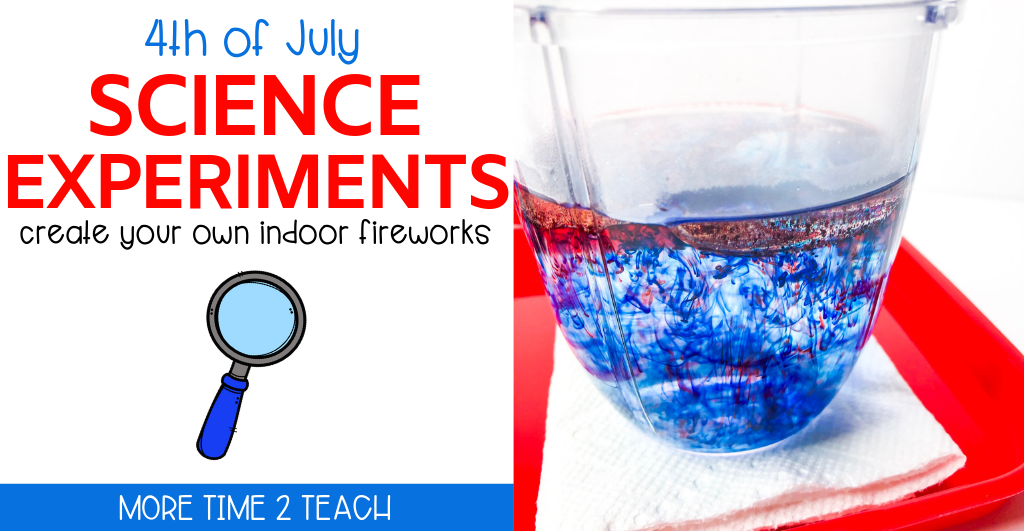
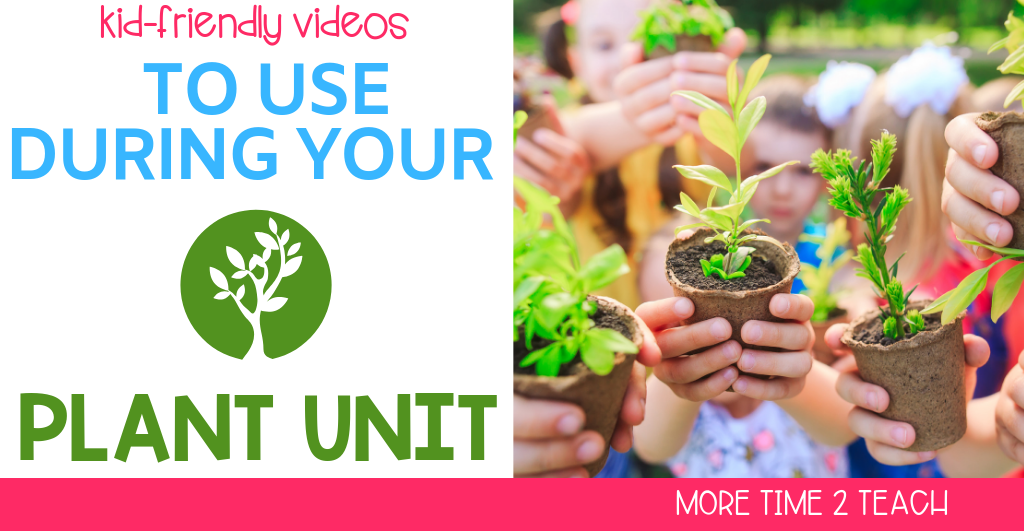
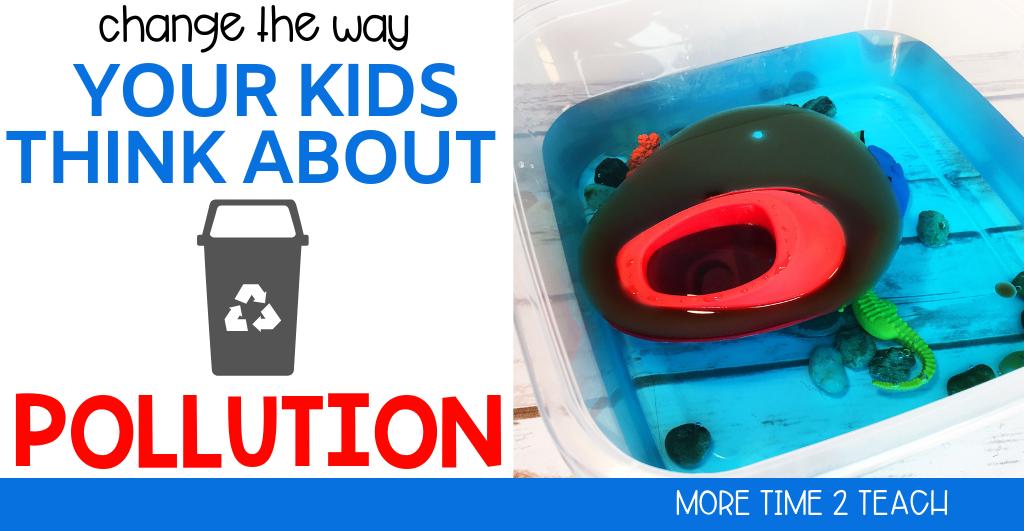
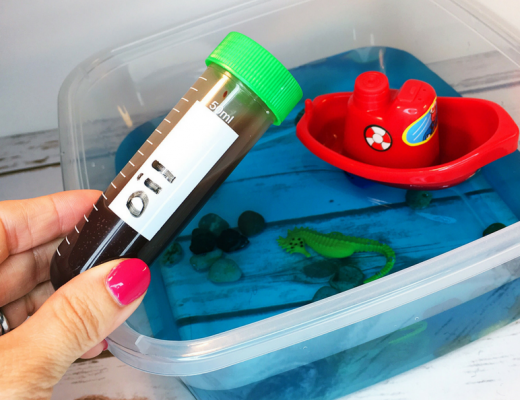
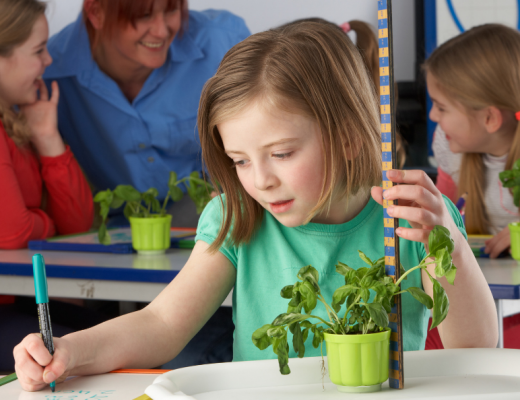

No Comments